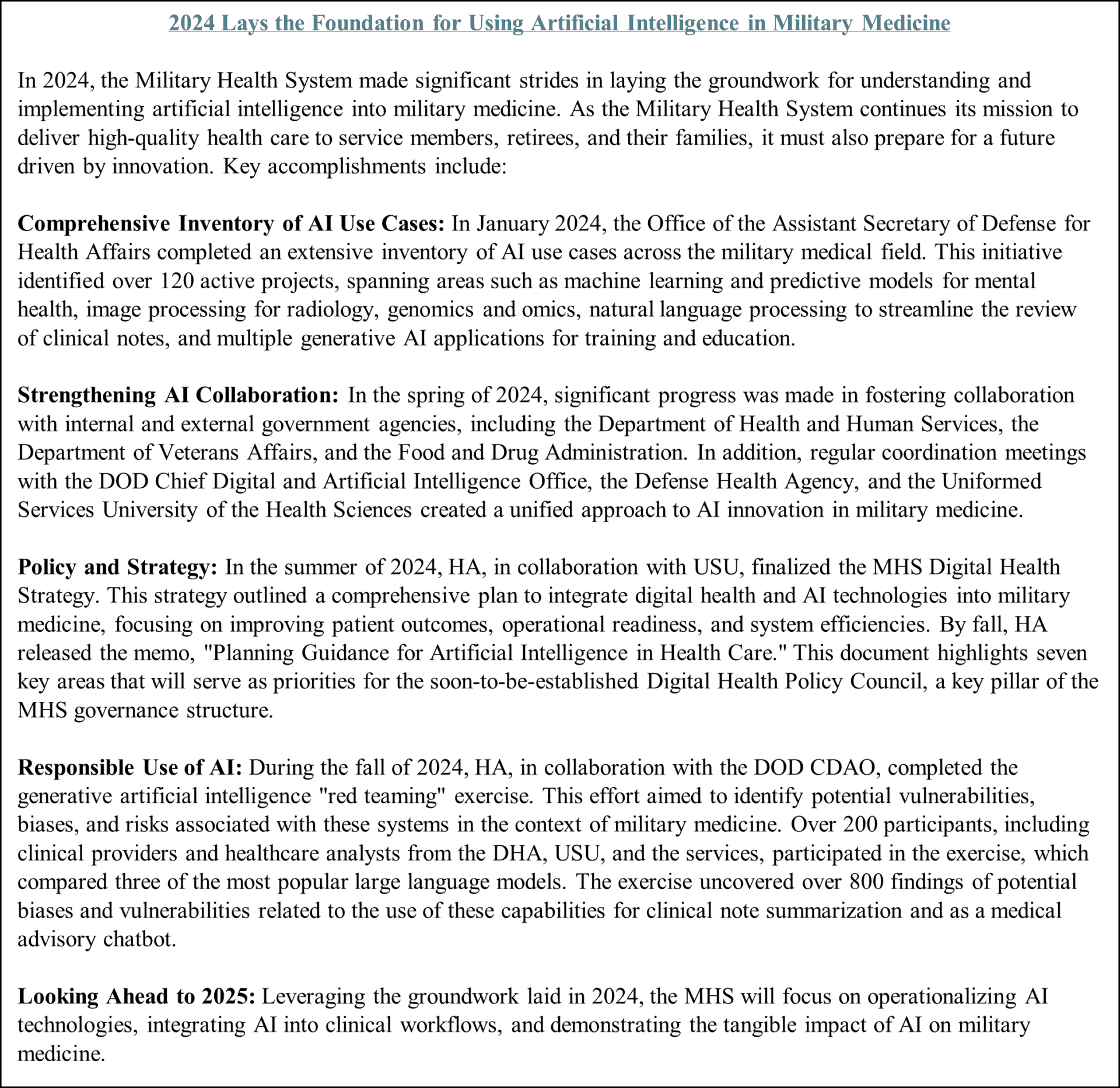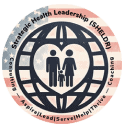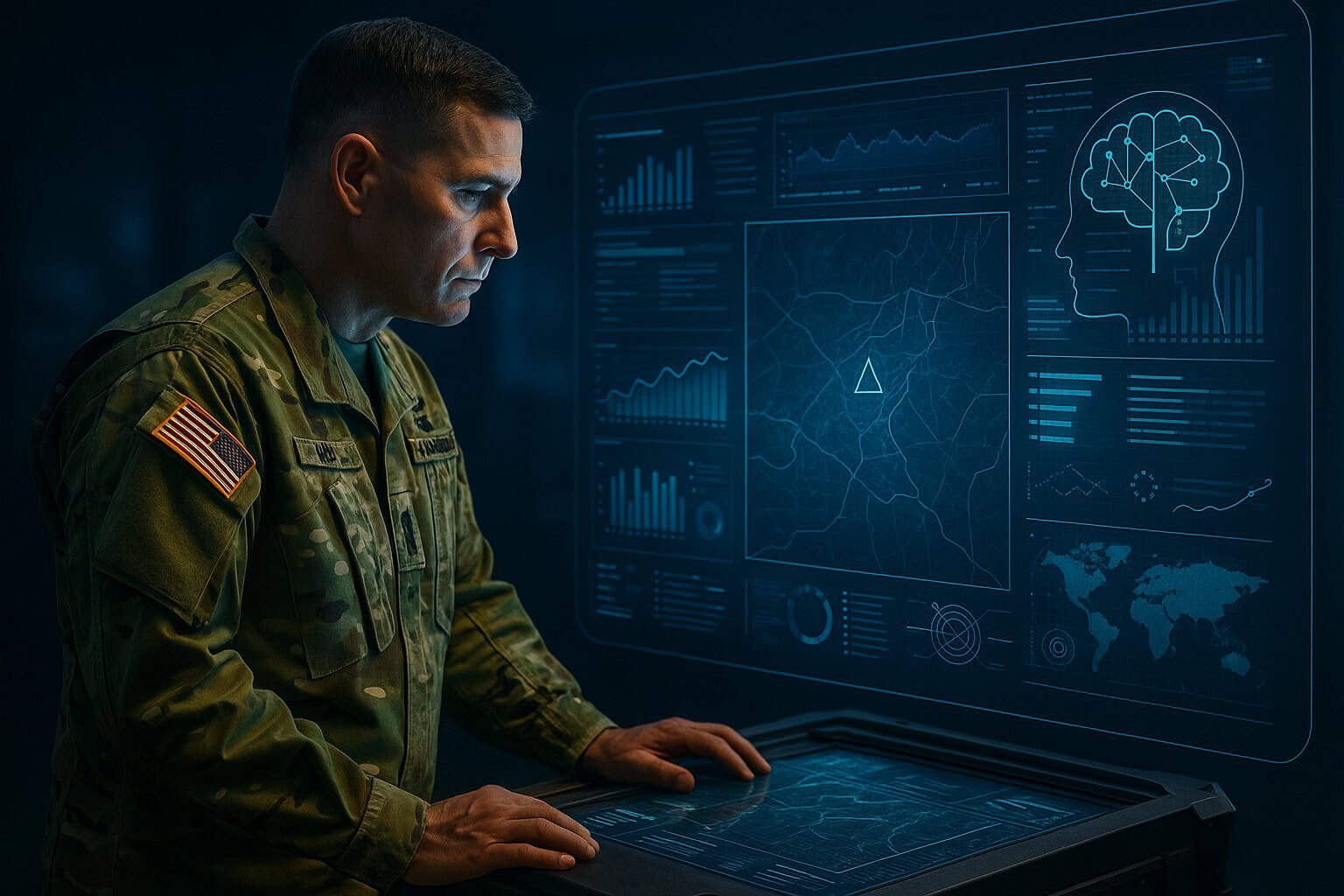Ready to deploy AI logistics that outpace crisis?
AI logistics strategies to beat health crises before they hit.
Table of Contents
Executive Summary: We map how artificial intelligence can transform medical logistics, procurement, and supply resilience in the health‑human services sector. Lessons borrowed from military medical logistics translate into civilian power moves: predicting demand, automating procurement, intelligent routing, autonomous tracking, and governance ethics. Through real-life scenarios—from the private sector to Veterans Affairs (VA) hospitals and disaster centers—we demonstrate how strategic health leaders (SHELDR) can leapfrog into the Make All Americans Healthier as a National Strategic Imperative (MAHANSI) era. To learn more, use the links, questions, learning activities, and references.
AI Supply Chain Superiority Motivates Crisis-Ready Health Systems
Health‑human services systems lag in logistics agility. Military medical logistics have pioneered the use of AI tools to forecast supply needs, orchestrate battlefield routing, and automate procurement in fluid, high-risk zones. Civilian providers scramble during pandemics, overdose spikes, and disasters. Forecasting models in supply systems now achieve up to 87% accuracy and speed up crisis recovery by 40% compared to legacy systems. For example, Insider 2025 recently reported that Mayo, Cleveland, and Rush Medical Centers cut waste and forecast shortages using AI in logistics.
This chapter discusses procurement reform, predictive routing, resilience through signals, and ethical governance.
We challenge you to lead as logistician-leaders, not responders.
AI-Driven Procurement Reform: Shut Down Manual Guesswork
Veteran logisticians know that manual procurement doesn’t work in a crisis. AI is increasingly used in military supply chains to identify trends in demand, automate the ordering of critical supplies, detect issues, and negotiate prices with vendors in real-time. Civil health doesn’t have to start from scratch. Health systems can utilize AI bots to determine the necessary medications in the ICU, automatically procure them as needed, and adjust to fluctuations in demand.
That gives strategic leaders the freedom to make plans instead of putting out fires.
Within the U.S. Department of Defense’s logistics modernization, AI systems ingest theater-level supply data, project demand for trauma kits, blood products, and mortality trends across units, and automatically trigger resupply from joint warehouses. That reduces human error, evens out stock levels, and enables logistical officers to operate strategically. Across civilian healthcare, procurement remains manual—purchase orders lag behind data, and then a crisis arrives. AI bots trained on historical usage—such as flu seasons, disaster zones, and overdose waves—can forecast needs and automatically replenish critical items when thresholds are reached.
Imagine a state VA network using AI to forecast fentanyl overdose antidote (naloxone) shortages before regional spikes turn fatal. The system taps EMS call volume, overdose clusters, and historical supply data. When predicted inventory falls below a safe level, it triggers a procurement order from state-contracted vendors. Stock arrives days before spikes hit, preventing critical shortages. That’s AI procurement working.
Leadership vision: set up predictive procurement rules, connect to suppliers with electronic ordering, and authorize AI triggers with thresholds and escalation protocols. You reduce manual guesswork. You stop orders from being written under pressure. Civilian health systems can adopt military‑grade automated procurement pipelines to drive precision, efficiency, and readiness.
AI procurement reduces human lag, predicts shortages, and automates essential orders. Civil systems should deploy predictive procurement pipelines to replace manual purchasing and respond ahead of crises.
Next, we apply battlefield-grade routing AI for civilian supply resilience.
Military‑Grade Routing in Civilian Hands: Predictive Routing and Autonomous Tracking
Military convoys are not driving blind as much. They are beginning to use AI to recalculate routes based on terrain threats, the movement of hostile forces, weather conditions, and urgency. Civilian logistics face similar risks, including flooding, roadblocks, and hurricane disruptions. AI routing tools can efficiently route supplies—such as mobile dialysis units, vaccines, and oxygen—around obstacles in real-time. When used with autonomous tracking (e.g., drones or secure GPS), health leaders gain battlefield-like situational awareness.
The Defense Health Agency’s modernization efforts now integrate artificial intelligence into medical supply convoy operations, driving unprecedented resilience in challenging terrain and contested environments. AI routing algorithms ingest real-time threat intelligence, terrain data, traffic conditions, and inventory levels to build a dynamic “common operating picture” of medical supply movement. When detection systems identify convoy threats—such as hostile activity or infrastructure damage—AI immediately analyzes risk patterns and proposes alternate routes to bypass hazards, maintaining delivery schedules to frontline units.
This threat-adaptive routing keeps life-saving materiel flowing, despite evolving battlefield conditions.
In real life, AI-powered dynamic rerouting enables the DHA to maintain critical medical supply lines even when conditions become challenging. When a convoy is ambushed or a corridor is blocked, the AI looks at other corridors based on the terrain and sensor data to find the best route that keeps the convoy safe and on schedule. This built-in flexibility helps with resilience and agility, which are attributes that have been developed in military sustainment for a long time. According to DefenseScoop, such algorithmic agility eliminates disruptions, supports operational readiness, and bolsters preparedness across the Department of Defense logistics system.
In effect, DHA is building convoy logistics that think—and reroute—on their feet, mirroring commercial supply chain agility but hardened for hostile environments.
Civil health can build analogous dashboards by gathering data on road closures, weather alerts, hospital demand, and supply stock. Models trained on past disasters can learn what routes collapse first and reroute supplies within minutes. For example, after flooding disables highways, a state disaster command center taps an AI logistics dashboard to reroute mobile dialysis units and medications. The system models hospital needs, maps alternative routes learned from previous floods, and dispatches supply teams via drone-assisted or ground courier paths. Autonomous tracking enables the command center to monitor movement and dynamically adjust next-stage pickup points. No waiting, no surprise outages. Patients get uninterrupted dialysis care.
Drone delivery is another frontier. Zipline and other autonomous networks already deliver blood, vaccines, AEDs, and insulin in U.S. settings and abroad, cutting transit delays in hard-to-reach zones. Imagine Zipline-style networks delivering refrigerated vaccines or antidotes to remote facilities cut off by a storm. You pair intelligent routing with tracking and accountability.
AI routing and tracking build resilience across civilian supply chains. Predictive and autonomous logistics ensure care continues to flow despite disruptions.
Next, we shift from just-in-time supply to signal-driven resilience.
From Just‑in‑Time to Just‑in‑Case: Build Resilience with AI Signals
Just‑in‑time doesn’t work in a crisis. Military logistics adopt “just‑in‑case”: pre-position supplies based on threat intelligence and AI risk signals. Civil health can mimic this. AI-triggered early warning signals—such as regional hospitalization trends, EMS spikes, and social determinants data—drive proactive pre-positioning. Build resilience by recognizing the signs of rain before a crisis floods.
Systematic reviews document that AI in supply chains improves risk assessment, forecasts disruption, and informs contingency warehousing decisions. Civil systems rely on reactive stock movements. Instead, leaders can build AI dashboards that merge data—such as hospital strain, overdose trends, migration, and extreme weather alerts—to predict crisis zones days in advance. That activates “just‑in‑case” logistics protocols: dispatching oxygen tanks, trauma kits, mobile mental health units, and cold-chain vaccine boxes to regional hubs before the crisis peaks.
In military logistics, predictive risk models signal when to move resources away from a likely threat zone or to stockpile a forward position in anticipation of battle. Civil health should replicate that: AI-informed signals (weather, epidemiology, EMS trends) trigger inventory shifts before surge—saving lives and minimizing waste.
AI signal forecasting enables proactive stock positioning—transitioning from reactive supply to strategic preparedness by adopting a military-style just-in-case logistics approach.
Final move: anchor it all with governance and trained logistics teams.
Build Ethical, Battle‑Ready AI Logistics Leadership DNA
Battlefield logistics succeed only when governance protocols, oversight, and trained teams back systems. Military medical logistics established cross-functional teams and developed ethical guidelines for the use of AI. The military health system is undergoing a transformation powered by AI. The article below illustrates their current efforts.

Civil health needs the same infrastructure: audit trails, transparency, bias reviews, AI acknowledgements, and leadership nerve.
The U.S. Army and Defense Medical Logistics modernization emphasizes joint teams—comprising clinicians, AI engineers, and logisticians—working under governance charters, ethical reviews, transparency protocols, and traceability logs. Civilian models often lift tools without infrastructure—leaving liability, bias, or trust gaps. Leaders must form cross-functional AI logistics teams aligned on data definitions, procurement triggers, routing logic, response performance, and equity metrics. Embed independent oversight—not just IT civilian leadership.
You also need ethical guardrails, including AI audits, bias detection, explainable logic, stakeholder feedback loops, and public transparency on thresholds and decisions. Consider the following scenario: A state mental health or overdose analytics tool prioritizes hotspots for naloxone distribution. Governance publishes performance metrics, demographic audits, and flags anomalies. If certain counties seem underserved, logistics leadership investigates and corrects the issue.
Military logistics balances urgency with control. Civil leaders can’t outsource ethics. Build governing boards, review triggers, and ensure permit override authority and clear audit definitions. That’s leadership muscle—battle-tested.
You need institutional teams and ethics governance in place for AI logistics. That anchors trust and reliability. Build infrastructure, not just algorithms.
Here’s how to put it all into play across HHS settings.
Deploy AI Logistics Now—Lead MAHANSI with Power
Military-grade AI logistics delivers crisis intelligence, including procurement that auto-predicts shortages, routing that adapts mid-transit, signal-driven stock staging, and governance that builds trust. These moves have saved lives in conflict zones and offer a playbook for civilian health leadership.
If you wait for the next crisis, you trail behind.
Would you bet your job on outdated playbooks?
Learn more:
Instead, lead like a logistic commander: build predictive systems, combine AI tools, cross-functional teams, and ethical guardrails. MAHANSI demands leadership upgrades.
Consider discussion questions and learning activities, then check out these articles at the Strategic Health Leadership (SHELDR) website:
- 3 Unbreakable Rules for Leading Health AI Effectively
- AI: The Disease Detective – Three Imperatives On How To Uncover Hidden Threats Using AI
- 3 Future-Focused AI Imperatives to Navigating the AI Surge: The Enlightened Strategic Health Leaders’ Guide to Transforming Healthcare
Deep Dive Discussion Questions
- How would you build a joint AI logistics team across HHS divisions and civilian institutions?
- What clinical supply disruption in your region could AI procurement prevent before a surge?
- How might rural systems use predictive routing to maintain care access during disasters?
- What ethical controls must you embed in AI logistics before deployment?
- How will you transition from just-in-time to just-in-case logistics in your organization?
Professional Development & Learning Activities
- Build Your AI Logistics Cross-Functional Team: Identify roles in procurement, data, clinical ops, logistics, governance; design charter and pilot plan.
- Predictive Procurement Simulation: Use local historical supply-demand data to draft an AI forecasting and auto-order threshold project plan.
- Signal‑Driven Pre‑Positioning Tabletop Exercise: Simulate alerts (weather, EMS spikes); map pre-position supply hub responses using AI logic.
Videos
Transforming Emergency Responses and Healthcare Access (Zipline & GoAERO). May 2024, Zipline/GoAERO, Wall Street Journal, Drone and autonomy-enabled delivery revolutionizing medical logistics access.
Hashtags
#AISupplyChain #HealthLogisticsAI #CrisisReadyHealth #AILogisticsLeadership #PredictiveHealthOps




